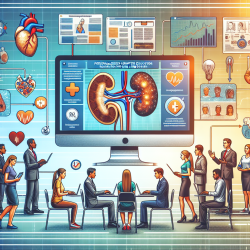Neurodegenerative diseases such as Alzheimer's and other forms of dementia are increasingly prevalent worldwide. Despite their widespread impact, diagnosing these conditions accurately remains a challenge. Traditional diagnostic methods often lack the specificity and sensitivity needed for confident diagnosis. However, recent advancements in imaging technology are paving the way for more precise evaluations.
The Promise of Advanced Imaging Techniques
The research article titled "Multimodality Imaging of Neurodegenerative Disorders with a Focus on Multiparametric Magnetic Resonance and Molecular Imaging" highlights groundbreaking advancements in the field. These techniques promise to enhance diagnostic accuracy and therapeutic monitoring significantly.
- Multiparametric MRI: This technique offers a comprehensive view by combining various MRI parameters, providing detailed insights into brain structure and function.
- Molecular Imaging: Techniques such as positron emission tomography (PET) allow for the visualization of molecular processes within the brain, offering insights into disease pathology that were previously inaccessible.
Benefits for Practitioners
The integration of these advanced imaging techniques into clinical practice can offer numerous benefits:
- Improved Diagnostic Accuracy: By providing a more detailed view of brain pathology, these techniques can help differentiate between various types of dementia and other neurodegenerative disorders.
- Treatment Monitoring: Molecular imaging can be used to monitor the effectiveness of therapies, such as monoclonal antibody treatments, by visualizing changes in the brain over time.
- Research Opportunities: These innovations open new avenues for research into the underlying mechanisms of neurodegenerative diseases, potentially leading to novel therapeutic approaches.
A Call to Action
If you are a practitioner looking to enhance your diagnostic capabilities or explore new research opportunities, consider integrating these advanced imaging techniques into your practice. Not only will this improve patient outcomes, but it will also position you at the forefront of medical innovation.










